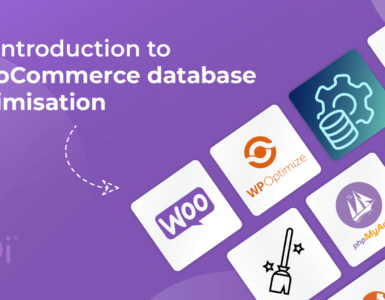As AI continues to shape how information is consumed and retrieved, content creators face a new challenge: making their work not only appealing to human readers (with increasingly reduced attention spans) and traditional search engines, but also optimized for artificial intelligence.
Content chunking is a strategy that meets this challenge head-on by structuring information in a way that aligns with the preferences of all these audiences.
What Is Content Chunking?
Content chunking is the practice of breaking down information into smaller, more manageable sections.
Instead of overwhelming readers with dense, unstructured text, content is divided into clear, focused parts, each addressing a specific topic or question.
This approach enhances readability, improves comprehension, and aligns with the way people consume digital content today.
In essence, content chunking serves as a roadmap for readers.
Each section acts as a waypoint, guiding them to the information they seek without requiring them to wade through irrelevant details.
This not only keeps users engaged but also caters to the “skim and scan” reading behaviour, common online.
For example, websites like HubSpot use content chunking to organize their articles into concise, actionable sections…

Each segment is often accompanied by subheadings, bullet points, or visuals, making it easier for readers to navigate and absorb the content.
Beyond its benefits for users, content chunking also plays a significant role in search engine optimization (SEO). Search engines value structured content that answers specific queries, and chunked content is more likely to appear in featured snippets and other prominent positions in search results.
By focusing on one query per section, content becomes more discoverable and relevant to search engines and readers alike.
Why Content Chunking Is Vital for AI and SEO
Content chunking not only gives you a framework to develop a user-friendly approach; it’s also a powerful tool for improving your content’s visibility in AI and search engines.
By organizing information into well-defined sections, you create a structure that aligns perfectly with how search algorithms evaluate and rank content.
Improves Visibility
AI tools like ChatGPT and search engines like Google prioritize content that answers specific user queries.
Chunked content naturally lends itself to this, as each section can focus on a distinct topic or question.
This clarity increases the chances of your content being featured in search results, especially in coveted positions like featured snippets.

These snippets are often pulled directly from concise, well-structured answers, making content chunking a strategic choice for SEO.
Optimizes for Voice Search
With the rise of voice-activated search tools like Alexa and Google Assistant, the way people search online has evolved.
Voice searches are typically question-based and conversational, with users expecting quick, precise answers.
Content chunking enables you to create sections that directly address these queries, increasing your chances of being the go-to source for voice search results.
Enhances Content Scannability
Search engine crawlers analyze the structure of a webpage to understand its content.
Using subheadings, bullet points, and concise paragraphs helps crawlers interpret your content more effectively.

This makes it easier for search engines to rank your content for relevant keywords and topics.
Boosts Keyword Relevance
Each chunked section can target specific keywords or phrases, improving the overall keyword relevance of your content.
By strategically placing keywords in subheadings and throughout the text, you signal to search engines that your content comprehensively covers the topic.
Enhancing User Experience with Content Chunking
Content chunking is a game-changer when it comes to improving user experience. Users often skim rather than read, and chunked content provides clarity and structure that keeps them engaged and coming back for more.
Makes Information Easy to Digest
When faced with a wall of text, most readers lose interest quickly. Content chunking solves this by breaking information into smaller, manageable pieces.
Each section focuses on a single idea or question, making it easier for readers to absorb the content without feeling overwhelmed.
This approach is particularly effective for long-form content, where organization and flow are key.
Facilitates Quick Navigation
Chunked content works hand-in-hand with features like anchor links, tables of contents, and headings.
These elements allow readers to jump directly to the sections they’re interested in, saving time and creating a seamless browsing experience.
This ease of navigation is particularly important for mobile users, who make up a significant portion of today’s audience.
Keeps Readers Engaged
By presenting content in smaller sections, you reduce cognitive load and maintain the reader’s attention for longer.
Each chunk acts as a natural pause point, encouraging readers to continue scrolling without feeling fatigued.
This format is especially useful for tutorial or guide-style content, where step-by-step instructions are most effective when delivered incrementally.
Improves Accessibility
Content chunking also enhances accessibility. For individuals with visual or cognitive impairments, shorter sections and clearly labelled headings make content easier to follow.

This inclusive approach broadens your audience and ensures everyone can engage with your content.
Encourages Deeper Exploration
When readers find value in one section, they’re more likely to explore others.
Chunked content creates opportunities to link to related topics within the same piece, increasing the likelihood of readers diving deeper into your website.
This interconnectedness boosts user satisfaction while supporting your content marketing goals.
How to Implement Content Chunking
Outlining Main Topics
Start by identifying the key themes of your content. Consider the questions your audience is likely asking and how your article will address them.
For example, if you’re writing a guide on website optimization, your main topics might include:
- Image optimization
- Database optimization
- Mobile-first design
- Third-party tools
- Etc.
These overarching themes will serve as the foundation for your chunked content.
Dividing into Subtopics
Once you’ve established your main topics, break them down further into focused subtopics.
Each subtopic should address a single question or idea. Use headings and subheadings to structure your content clearly.
For instance, under “SEO Basics,” you might create subtopics such as “Keyword Research,” “On-Page Optimization,” and “Link Building.”
Keep your paragraphs concise, limiting each to a single thought. Bullet points, numbered lists, and short sentences can also help maintain readability and flow.
Adding Navigation Features
To enhance usability, incorporate navigation elements that allow readers to move easily through your content.
- Anchor Links: Create clickable links that take readers directly to specific sections of the page.
- Tables of Contents: Include a table of contents at the beginning of your article to outline its structure.
- Internal Links: Link to related sections or articles within your content to provide additional value and encourage exploration.
These features not only improve the reader experience but also make your content more appealing to search engines by enhancing structure and usability.
Keeping Content Actionable
Ensure that each section provides actionable insights or answers a specific question. Readers should leave each chunk with a clear takeaway or step they can implement.
For example, instead of a vague heading like “Improve SEO,” opt for something precise like “Use Long-Tail Keywords to Target Niche Audiences.” Pair this with examples or tips to make the advice practical.
Scaling Chunking Across Your Content
Once you’ve mastered chunking for a single piece, apply it to other areas of your content strategy.
Blogs, landing pages, and even product descriptions can benefit from chunking to enhance readability and SEO performance.
Tips for Scaling:
- Develop a reusable template for chunking content, including heading structures and navigation features.
- Train your team to implement chunking consistently across all written materials.
- Periodically review older content to reformat it using chunking principles.
Final thoughts
From improving AI/search visibility to increasing user engagement, content chunking offers a range of benefits.
Breaking down complex information into focused, digestible sections, you can make your content more accessible, engaging and actionable.
This method not only caters to the way users consume information but also aligns with the preferences of AI-driven search algorithms.
Whether it’s boosting your chances of appearing in featured snippets, optimizing for voice searches, or improving user engagement, content chunking delivers measurable benefits.
Upgrade your hosting 📈 Unleash your websites 🚀
Build, deploy & manage all your sites/apps at scale. Use our high-spec cloud servers to ensure blazing-fast load times, every time. Get market-leading speed, security & customer support.
- Easy setup & management across multiple cloud platforms
- WordPress, WooCommerce, Laravel optimisations & more
- Free Email, DNS, CDN, SSL, SSH, Backups, Security & Git integration all baked-in
- Global reach with 60+ global data centres
Find out how our Managed Cloud Hosting is perfect for agencies, online stores, developers, multi-site hosting and high traffic sites.







Add comment